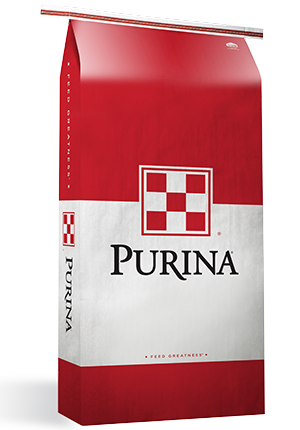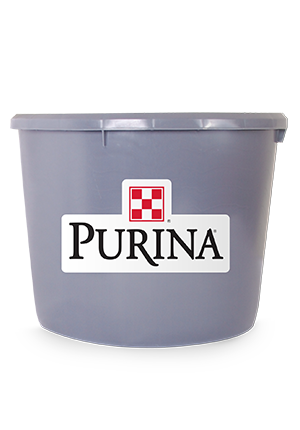
Heat Stress in Dairy Cattle: How to Save Reproduction

When temperatures and humidity rise, often milk production falls.
What about the other repercussions of heat stress in dairy cattle? Just like milk production, reproduction rates can drop as temperatures and humidity rise.
Consider these three steps to identify signs of heat stress in dairy cattle and help maintain reproduction through the summer heat.

Step 1: Measure dairy cattle heat stress
A temperature of 72 degrees F may feel comfortable to you, but not to your cows. Understanding how heat stress can affect your herd’s milk production and reproduction is the first step in mitigating the summer slump. Estimate your herd’s cooling requirements using the Temperature-Humidity Index (THI). It calculates heat stress in dairy cows by using ambient temperature and relative humidity. Download the free Purina® CoolCow® app for iPhone or Android to measure the THI in your barn.
Step 2: Know the consequences of heat stress
Ignoring heat stress in cattle can leave a lot of profit potential untapped. Previously, researchers believed heat stress began at a THI of 72. A recent study shows the negative effects of heat stress in dairy cows occur much sooner. Milk production is affected at a THI of 68 and reproduction is impacted at a THI of 55.1 Pregnancy loss and longer gaps between heat cycles are common reproductive challenges caused by heat stress. Heat stress also has a long-term impact on dry cows and their offspring, according to research at the University of Florida.
Step 3: Manage for high THI
Conducting a facility and management audit can identify ways to help cows cope with heat stress. Heat abatement strategies may seem simple, and sometimes obvious, but they can make a big difference. Adjust the ration to meet increased energy requirement, maintain milk production and reproduction rates. Incorporating Purina® Rally® Dairy Feed before heat stress hits can help your herd overcome the challenges caused by heat stress.
Don’t let the summer heat melt your profit potential. Contact your local Purina Animal Nutrition expert today to implement nutritional strategies to beat the summer heat.
What about the other repercussions of heat stress in dairy cattle? Just like milk production, reproduction rates can drop as temperatures and humidity rise.
Consider these three steps to identify signs of heat stress in dairy cattle and help maintain reproduction through the summer heat.

Step 1: Measure dairy cattle heat stress
A temperature of 72 degrees F may feel comfortable to you, but not to your cows. Understanding how heat stress can affect your herd’s milk production and reproduction is the first step in mitigating the summer slump. Estimate your herd’s cooling requirements using the Temperature-Humidity Index (THI). It calculates heat stress in dairy cows by using ambient temperature and relative humidity. Download the free Purina® CoolCow® app for iPhone or Android to measure the THI in your barn.
Step 2: Know the consequences of heat stress
Ignoring heat stress in cattle can leave a lot of profit potential untapped. Previously, researchers believed heat stress began at a THI of 72. A recent study shows the negative effects of heat stress in dairy cows occur much sooner. Milk production is affected at a THI of 68 and reproduction is impacted at a THI of 55.1 Pregnancy loss and longer gaps between heat cycles are common reproductive challenges caused by heat stress. Heat stress also has a long-term impact on dry cows and their offspring, according to research at the University of Florida.
Step 3: Manage for high THI
Conducting a facility and management audit can identify ways to help cows cope with heat stress. Heat abatement strategies may seem simple, and sometimes obvious, but they can make a big difference. Adjust the ration to meet increased energy requirement, maintain milk production and reproduction rates. Incorporating Purina® Rally® Dairy Feed before heat stress hits can help your herd overcome the challenges caused by heat stress.
Don’t let the summer heat melt your profit potential. Contact your local Purina Animal Nutrition expert today to implement nutritional strategies to beat the summer heat.
1Purwanto, B.P., Y. Abo, R. Sakamoto, F. Furumoto, and S. Yamamoto. 1990. Diurnal patterns of heat production and heart rate under thermoneutral conditions in Holstein Friesian cows differing in milk production. J. Agric. Sci. 114:139-142.



